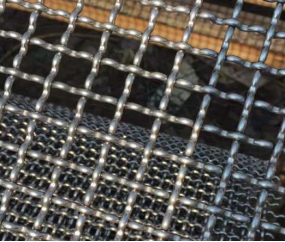Different Types of Nails Suitable for Installing Hardwood Floors Effectively and Efficiently
Types of Nails for Hardwood Floors
When it comes to installing hardwood floors, the type of nails you choose plays a significant role in ensuring a lasting and durable finish. Since hardwood flooring can be a significant investment, it’s essential to understand the various types of nails available and their specific applications. This article will delve into the different types of nails used for hardwood floors, helping you make an informed decision for your flooring project.
1. Cleave Nails
Cleave nails are typically used in traditional hardwood flooring installations. These nails are long and slender, designed with a sharp point that allows them to penetrate the wood easily. When installing solid hardwood floors, cleave nails are often driven at an angle through the tongue of the planks. This method, known as blind nailing, conceals the fastener and provides a clean aesthetic. The advantage of using cleave nails is their ability to hold the lumber tightly to the subfloor, reducing the risk of movement and creaking.
2. Finish Nails
Finish nails are another popular option for hardwood floor installations, particularly for thinner boards or engineered wood. These nails are shorter than cleave nails and come with a small, rounded head, which allows them to sit flush with the surface of the wood. While finish nails can provide a sleek appearance, they are not ideal for all situations. Since finish nails do not have the holding power of cleave nails, they are often used in conjunction with adhesives in areas where additional support is needed.
3. Staples
type of nails for hardwood floors

In recent years, staples have become a favored choice for many flooring contractors, especially for engineered hardwood. These metal fasteners are U-shaped and are typically applied with a pneumatic stapler, making installation quicker and less labor-intensive. Staples provide a strong holding power and can effectively anchor the flooring to the subfloor. However, it's crucial to choose the right length and gauge of staples to ensure they penetrate the subfloor adequately without damaging the wood planks.
4. Brad Nails
Brad nails are similar to finish nails but are even thinner. They are often used for very delicate applications, where large fasteners might split the wood. Brad nails can be used for securing hardwood trim pieces, but they are generally not suitable for the primary installation of hardwood floors. Their minimal holding power makes them a better choice for small, detailed projects or as part of a glue-down method.
5. Screws
While not commonly used in traditional hardwood installations, screws can be beneficial in certain situations, such as when dealing with unstable subfloors or fastening wider planks. Screws provide superior holding power and can be utilized for face nailing when necessary. For this method, pilot holes should be drilled to prevent splitting the wood. Using screws may create visible holes, so finish caps or wood filler can be used to create a seamless appearance.
Conclusion
Choosing the right type of nails for your hardwood floor installation is crucial to ensuring the longevity and stability of your flooring. Each type of nail has its strengths and weaknesses, making it essential to consider the specific requirements of your project. Whether you opt for cleave nails for traditional flooring, staples for engineered wood, or screws for complex installations, understanding your options will lead to a successful and aesthetically pleasing result. Always consult with a professional if you have any doubts, as they can provide expert guidance tailored to your unique flooring needs.
-
Space-Saving Chain Fence Hacks Vertical Gardening with Cyclone MeshNewsJul.16,2025
-
Innovations in Iron Nail Wire Production for Modern ConstructionNewsJul.16,2025
-
Creative Uses of Wire Netting Fence in Modern Landscape DesignNewsJul.16,2025
-
Barbed Wire Fence Innovations in Anti-Climb TechnologyNewsJul.16,2025
-
Architectural Uses of Umbrella Nails for Aesthetic Roof DesignsNewsJul.16,2025
-
Architectural Uses of Razor Barbed Wire in Secure Urban DesignNewsJul.16,2025




